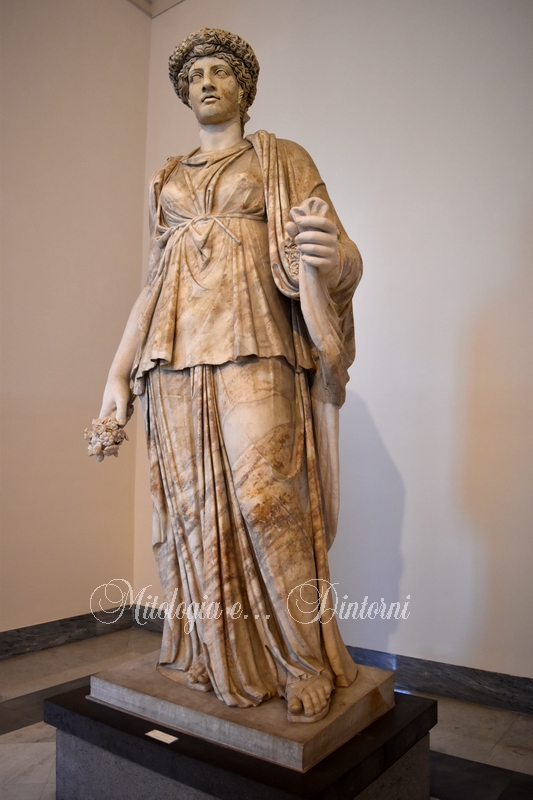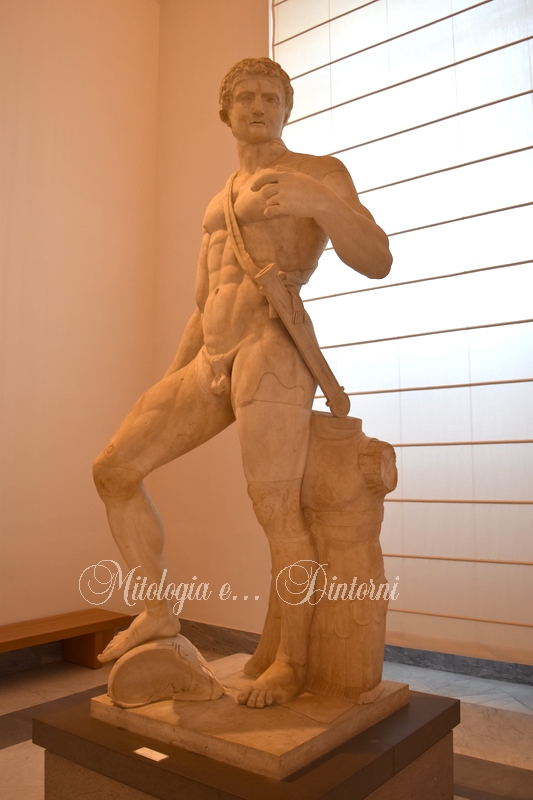Indice dei Musei
presenti in miti3000
Napoli Museo Nazionale - Piano Terra - Collezione Farnese - sala XII
Testo
Cd. Pomona o Flora minore
inv. 5978
Creazione romana, seconda metà II secolo d.C.
La statua databile nella seconda metà del II sec. d.C. è una rielaborazione di un modello greco creato alla fine del V sec. a.C. per un'immagine di Atena.
La figura è stata restaurata come Flora per via dei fiori presenti sul mantello. Essa appare, acefala e priva delle estremità, in un disegno di Maarten van Heemskerck, artista attivo a Roma tra il 1532 e il 1536. La testa inghirlandata è antica ma non le appartiene. Integrazioni moderne sono il braccio destro con il bouquet e la mano sinistra con il lembo della veste.
Nell'allestimento del cortile di palazzo in Campo dei Fiori, la cd. Pomona faceva da pendant all'altra più famosa Flora (inv. 6409). Le dimensioni e la corrispondenza dei gesti fanno pensare che anche nell'antichità le due statue fossero complementari. Si è ipotizzato che facessero parte di un gruppo delle Stagioni, elemento decorativo di un calendario o di un orologio monumentale, in cui la Pomona avrebbe personificato l'Autunno e la Flora la Primavera.
The so-called Pomona or Flora Minor
inv. 5978
Roman creation, second half of the 2nd century AD
This statue can be dated to the second half of the second century AD and is a reworking of a Greek model of Athena created at the end of the 5th century BC.
The figure was restored as Flora by the flowers on her cloak. It is shown headless and missing its extremities in a drawing by Maarten van Heemskerck, an artist active in Rome between 1532 and 1536. The garlanded head is ancient but does not belong to the statue. Modern additions are the right arm with the bouquet and the left hand holding the folds of her dress.
The so-called Pomona was paired with the more famous statue of Flora (inv 6409) when it was displayed in the courtyard of the palazzo in the Campo di Fiori. The sizes and similarity in pose of the two statues suggests that they were also paired in antiquity. It has been suggested that they belonged to a group of the Seasons which decorated a calendar or monumental horologium, in which Pomona was the personification of Autumn, and Flora of Spring.
Clicca sulle varie parti dell'immagine per i particolari
 |
cd. Tiberioinv. 6000 The so-called Tiberiusinv.6000
|
Fotografie di Giorgio Manusakis

